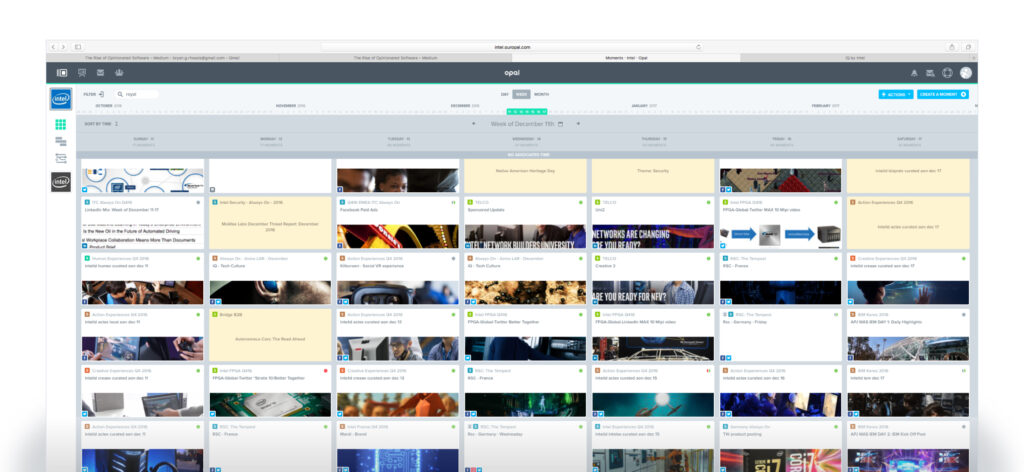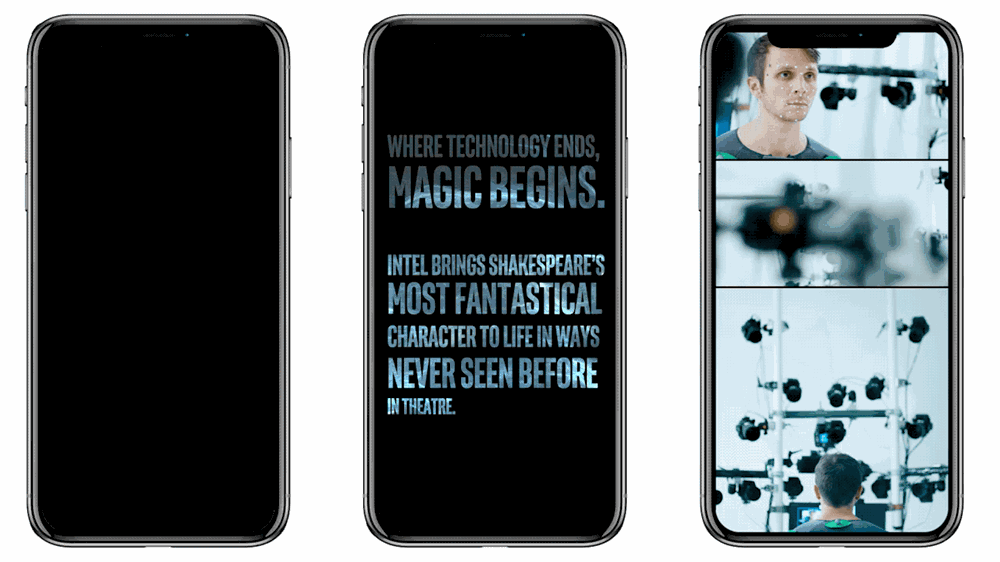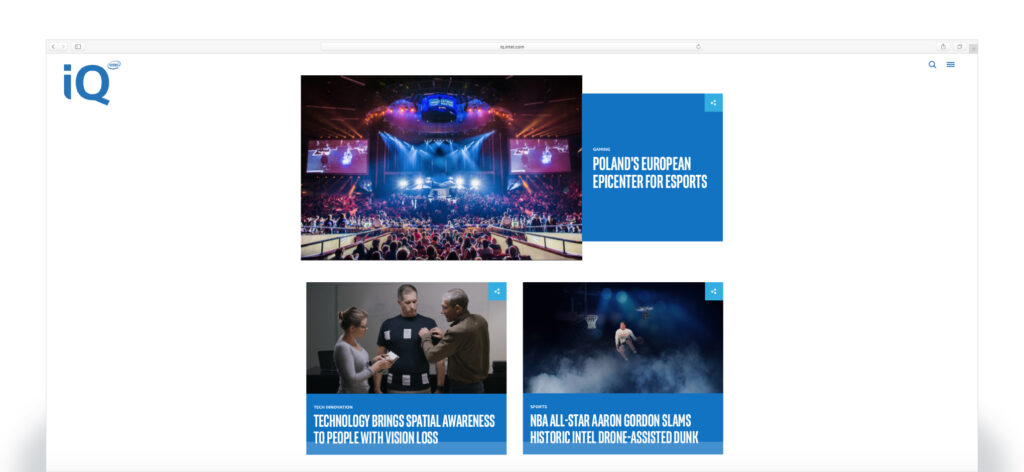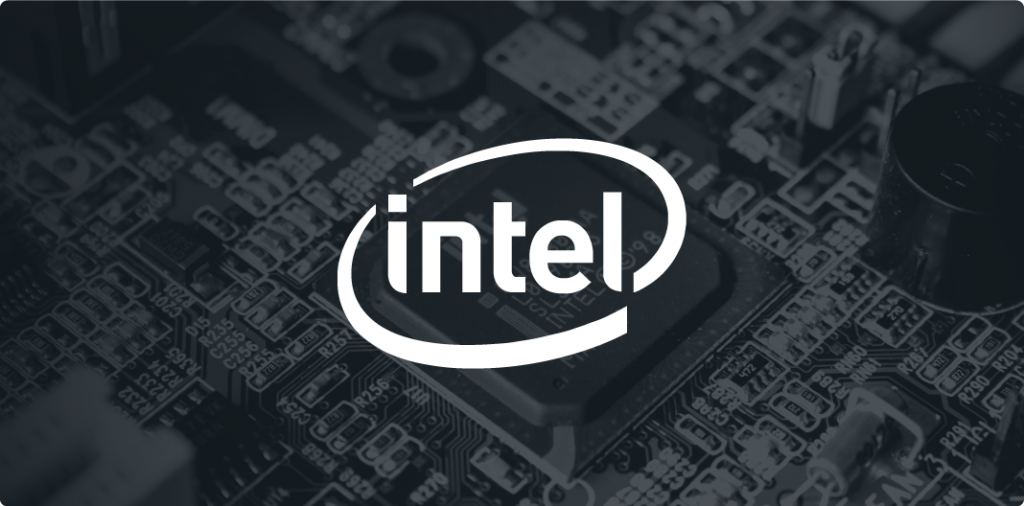As we continue our customer interview series, we were lucky to sit down with Luke Kintigh, the Global Head of Publishing for Intel iQ, and talk about the big bets that Intel is making in content marketing including new content formats like Facebook Canvas, along with their process for innovation.
As the Global Head of Publishing at Intel iQ, how do you describe your role?
I oversee the global strategy for Intel iQ, which is our flagship digital magazine and the foundation of our content marketing strategies at Intel since 2012. Our editors and writers do an awesome job of creating great content for our audience and it’s my job to ensure that their content gets in front of the right audiences, while driving continuous value for Intel’s business goals through our ongoing audience development efforts.
What does success look like?
We think about success in two key ways.
Our primary goal is to serve our audience. We want to deliver value that is differentiated from all the noise on internet today. We want to give them content that will make them smarter and enlighten them to do great things with the latest technology. We see ourselves as their guide rather than their hero, so we tell unique and interesting stories that fit with Intel’s point of view.
When we are successful, we are executing the most effective tactics that sequentially drive our audience journey and lifecycle, from new audiences, to those who have engaged with iQ content multiple times, to loyal subscribers and returning customers. We’ve found that acquiring, developing and building audiences takes time and happens successively, not instantly. To this end, we’ve learned you have throw out the short-term campaign playbook to uncover long-term success.
What are the big trends?
On the consumer front, the big one that we always point to is the advent of the feed. Ultimately audiences are now living in the feed, which can be the Facebook feed, the Twitter feed, the feeds within publications like Forbes and apps like Buzzfeed. Not too long ago it was more about getting your content to rank for search and beat the algorithm, now it’s a drastically different world.
Today attention, not content, is really the ultimate commodity.
Content is abundant, but people’s attention is actually pretty scarce. There’s a lot of content in the feed. In fact, the amount of content on the web doubles every nine months. To this end, as a brand and as a publisher, you really have to figure out how to stand out in this ocean of new content. We think the way to do this is to deliver differentiated value that earns people’s attention. We can’t and don’t want to compete with other top-tier publishers by pushing thousands of stories a day. Instead, we are constantly looking for unique stories, exclusive angles and value that we only we can bring to audiences.
On the technology front and tied to the feed, is the proliferation of mobile. Mobile is a big part of why the feed is so popular today. It’s built for a vertical screen and for scrolling with your thumbs. About 80% of our audience comes from mobile, so we’re constantly thinking about how to build content for mobile first. We’re doing everything from creating vertical video, to investigating push notification strategies, to testing distributed mobile-only platforms like Facebook Instant Articles.

How do you stay ahead?
We believe that you have to be deliberate and intentional about innovation. We spend about 30% of our time and budget on innovation-based projects. This keeps us learning, while morale and quality of work stay high. We’re always working of interesting and challenging new projects. You may think innovation just happens, but we’ve found it helps to have a process and structure on how we align our time and funding to supporting first-to-market opportunities.
One example of innovation is how we’re exploring new ad formats and platforms that are entirely mobile-focused given that’s where 80% of our audience is mobile. We have done several tests to promote iQ content using Facebook Canvas ads. These ads bring together videos, photo galleries and other various asset types in very dynamic and immersive ways. With this type of ad execution, you can do some pretty awesome stuff with dynamic and sequential storytelling to lead the audience down various paths. You can start with a video, which leads to a photo gallery, then to longform text or an infographic. We’ve done some pretty cool stuff with Facebook Canvas and learned a lot to help us optimize for sustained engagement.
The bottom line is that mobile content has to be purpose built exclusively for a smartphone; there are no short cuts.
One big learning we have found is changing our historical notion of using ads to drive to microsites or on-domain experiences. With these new immersive ad units, the ad itself is a microsite, so taking someone away from their experience in Facebook, for example, to your website is now unnecessary. Now we can actually pull in almost everything that would be housed in a microsite inside the ad unit. There are trade-offs, naturally, like the lack of first-party data acquisition, but the user experience is very seamless. People stay in the feed, they can click through to your experience instantly, and that experience is really rich and optimized for mobile.

One challenge we are facing right now is weighing that balance of how much of the experience do you try to optimize for in-platform or in-app versus trying to get someone to your site? The expectation is that audiences don’t want to leave the current environment. Trying to build that experience within the Facebook app opened our eyes to something bigger that pays off a better user experience. We’re now rethinking how our teams should be creating content and working together throughout a connected audience journey.
Can you talk about your process?
We have a pretty large internal team, along with external agencies working on iQ. There are many players involved including editors and writers, designers and distribution teams. Historically it’s been difficult to get the different teams, across multiple time zones, on the same page ⎯ no matter what the product.
Our process requires a lot of iterations to nail down the final details. There are all kinds of ideas to test out and mock up to make sure that we are good to go before anything actually goes into market. We’ve always had lots of back-and-forth around the creative process. As we set our focus to mobile and more immersive experiences, collaborating and sharing using PowerPoint and email just didn’t work anymore. Showing the experience is not as simple as it used to be. What once could be shared by a screenshot or an image could no longer begin to represent the work accurately. Context is super important, especially with these new content types and ads.
These experiences are so dynamic that you need to be able to accurately share them with key stakeholders and management in a way that shows them exactly how it’s going to be experienced it in the real, true format. For that we use Opal. It gives us the ability, to show these new formats, ad units and platforms clearly to executives. These mediums are new so they really need to experience them to effectively support them.
What does Opal make possible for you and your team?
Opal makes it easy to pull everyone together into one place. It’s one destination where everyone can see and experience our different assets in a dynamic way. People can even experience a Facebook Canvas ad and see how it fits into our overall strategy. Opal is where we start during the ideation stage. It’s where we go to get everyone on the same page, consolidate our team into one shared place.
Opal also gives us a good view into the future, showing what’s coming up so we can make sure that everyone is on the same page, which allows us to achieve more. It lets us be proactive, giving the teams the ability to clearly see what’s being worked on and it keeps all of our status and approvals in order. It’s a real-time way for us to collaborate and get things out the door, but it also helps us share what we’re working on when executives and other stakeholders ask for updates. Questions like: “what’s coming down the pipe next month?” or “What are you doing around this particular initiative or event?” are really easy to answer since we can always quickly send a snapshot of what we’re working on from Opal.
Opal saves us a lot of time and a lot of churn, especially when we’re dealing with work that requires multiple approvals or long range projects. We’re able to bring everyone in, so there’s real clarity around the activity and we can go back to see how we got to where we are. We can look back at archives of our past work. It’s so nice to have everything in one centralized place.
Before Opal, we would have constant friction trying to share our work. I’ve gone to the length of recording interface on my phone and sending it as .mov files to show what content will look like in the mobile feed or on the phone. It became an increasing challenge to use the traditional tools that had worked for the past 15 years. But the old ways of PowerPoint and email just don’t communicate the new experiences as an audience truly interacts with them in their native environment. As much as we would like to think they do, our audiences don’t live in PowerPoint and Excel.
There are a lot of places where iQ content lives. We have a sophisticated distribution model that includes several environments and channels. The average iQ post manifests in 8-10 different social posts and ad units from Facebook to Flipboard posts. Opal gives us a way to see how it’s all connected to leverage it across all of our channels and platforms. Having visibility into when and where we’re posting allows us to take that original piece of content and emulate it across Facebook, Twitter, LinkedIn and an array of native ad platforms such Outbrain and ShareThough. It really allows us to find order where it was once madness.

What’s next?
At its core, iQ has always fundamentally been our big bet on brand publishing and content marketing for Intel. We’re always trying to move a little closer to publishing and away from the brand part of “brand publishing.” Our aim is to eventually become a bonafide media property defined by treating our content like a product in itself. This ambition paves the way to generate revenue through our audience and move iQ from a cost center to an eventual profit center. That’s the holy grail.
This will take time and we know this, after doing it for almost 5 years. So we’re going to keep getting more sophisticated to put us on a path towards monetization. But we have focus on serving the audience more holistically first. We’re also always trying to learn as much as possible from leading publishers, talking to folks like Washington Post, Buzzfeed, The Atlantic and Vox, on a regular basis about how they think about growing and adapting their business. Publishers are on the forefront of where the space is going, not brands like us, so the closer we are to them, the better.
We always want to strike that delicate balance of serving the business and the audience, but our top aim is to really prove ourselves, not just as a brand publisher or content marketer, but as an authentic and trusted voice that competes and beats the best content on the web to capture your attention. So I think that’s the future we’re trying to shape for iQ. And of course using Opal enables us get more refined around mapping specific tactics and strategies to accomplish these big goals.

